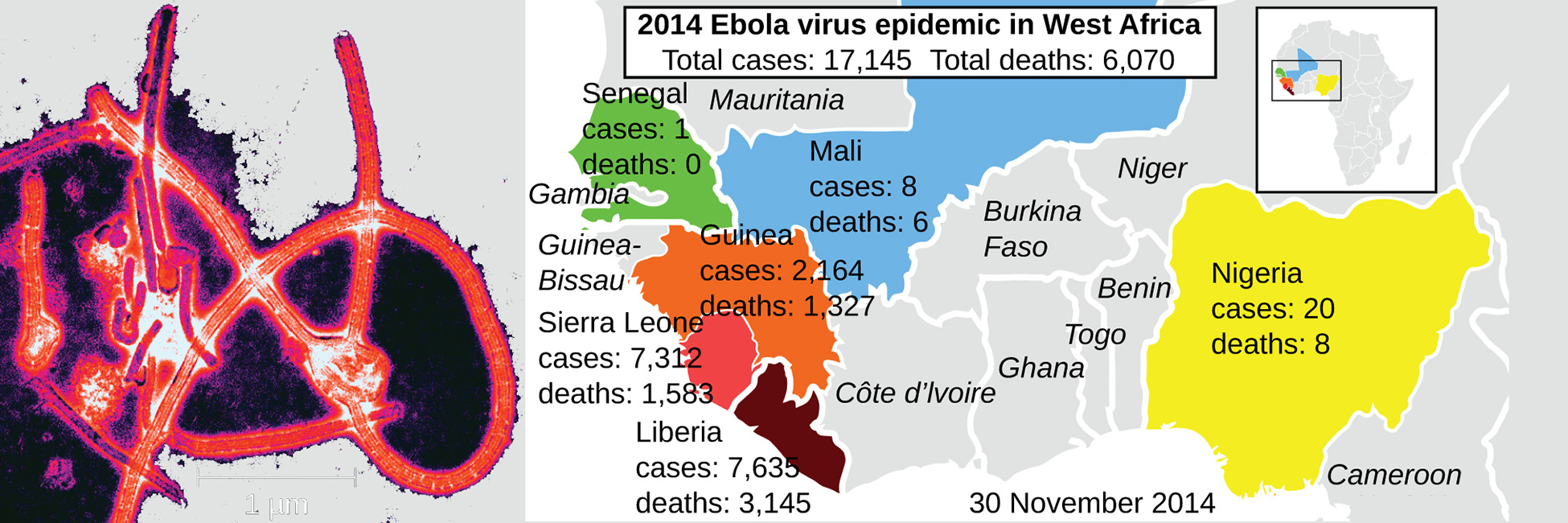15: Acellular Pathogens
- Page ID
- 77826
\( \newcommand{\vecs}[1]{\overset { \scriptstyle \rightharpoonup} {\mathbf{#1}} } \)
\( \newcommand{\vecd}[1]{\overset{-\!-\!\rightharpoonup}{\vphantom{a}\smash {#1}}} \)
\( \newcommand{\dsum}{\displaystyle\sum\limits} \)
\( \newcommand{\dint}{\displaystyle\int\limits} \)
\( \newcommand{\dlim}{\displaystyle\lim\limits} \)
\( \newcommand{\id}{\mathrm{id}}\) \( \newcommand{\Span}{\mathrm{span}}\)
( \newcommand{\kernel}{\mathrm{null}\,}\) \( \newcommand{\range}{\mathrm{range}\,}\)
\( \newcommand{\RealPart}{\mathrm{Re}}\) \( \newcommand{\ImaginaryPart}{\mathrm{Im}}\)
\( \newcommand{\Argument}{\mathrm{Arg}}\) \( \newcommand{\norm}[1]{\| #1 \|}\)
\( \newcommand{\inner}[2]{\langle #1, #2 \rangle}\)
\( \newcommand{\Span}{\mathrm{span}}\)
\( \newcommand{\id}{\mathrm{id}}\)
\( \newcommand{\Span}{\mathrm{span}}\)
\( \newcommand{\kernel}{\mathrm{null}\,}\)
\( \newcommand{\range}{\mathrm{range}\,}\)
\( \newcommand{\RealPart}{\mathrm{Re}}\)
\( \newcommand{\ImaginaryPart}{\mathrm{Im}}\)
\( \newcommand{\Argument}{\mathrm{Arg}}\)
\( \newcommand{\norm}[1]{\| #1 \|}\)
\( \newcommand{\inner}[2]{\langle #1, #2 \rangle}\)
\( \newcommand{\Span}{\mathrm{span}}\) \( \newcommand{\AA}{\unicode[.8,0]{x212B}}\)
\( \newcommand{\vectorA}[1]{\vec{#1}} % arrow\)
\( \newcommand{\vectorAt}[1]{\vec{\text{#1}}} % arrow\)
\( \newcommand{\vectorB}[1]{\overset { \scriptstyle \rightharpoonup} {\mathbf{#1}} } \)
\( \newcommand{\vectorC}[1]{\textbf{#1}} \)
\( \newcommand{\vectorD}[1]{\overrightarrow{#1}} \)
\( \newcommand{\vectorDt}[1]{\overrightarrow{\text{#1}}} \)
\( \newcommand{\vectE}[1]{\overset{-\!-\!\rightharpoonup}{\vphantom{a}\smash{\mathbf {#1}}}} \)
\( \newcommand{\vecs}[1]{\overset { \scriptstyle \rightharpoonup} {\mathbf{#1}} } \)
\( \newcommand{\vecd}[1]{\overset{-\!-\!\rightharpoonup}{\vphantom{a}\smash {#1}}} \)
\(\newcommand{\avec}{\mathbf a}\) \(\newcommand{\bvec}{\mathbf b}\) \(\newcommand{\cvec}{\mathbf c}\) \(\newcommand{\dvec}{\mathbf d}\) \(\newcommand{\dtil}{\widetilde{\mathbf d}}\) \(\newcommand{\evec}{\mathbf e}\) \(\newcommand{\fvec}{\mathbf f}\) \(\newcommand{\nvec}{\mathbf n}\) \(\newcommand{\pvec}{\mathbf p}\) \(\newcommand{\qvec}{\mathbf q}\) \(\newcommand{\svec}{\mathbf s}\) \(\newcommand{\tvec}{\mathbf t}\) \(\newcommand{\uvec}{\mathbf u}\) \(\newcommand{\vvec}{\mathbf v}\) \(\newcommand{\wvec}{\mathbf w}\) \(\newcommand{\xvec}{\mathbf x}\) \(\newcommand{\yvec}{\mathbf y}\) \(\newcommand{\zvec}{\mathbf z}\) \(\newcommand{\rvec}{\mathbf r}\) \(\newcommand{\mvec}{\mathbf m}\) \(\newcommand{\zerovec}{\mathbf 0}\) \(\newcommand{\onevec}{\mathbf 1}\) \(\newcommand{\real}{\mathbb R}\) \(\newcommand{\twovec}[2]{\left[\begin{array}{r}#1 \\ #2 \end{array}\right]}\) \(\newcommand{\ctwovec}[2]{\left[\begin{array}{c}#1 \\ #2 \end{array}\right]}\) \(\newcommand{\threevec}[3]{\left[\begin{array}{r}#1 \\ #2 \\ #3 \end{array}\right]}\) \(\newcommand{\cthreevec}[3]{\left[\begin{array}{c}#1 \\ #2 \\ #3 \end{array}\right]}\) \(\newcommand{\fourvec}[4]{\left[\begin{array}{r}#1 \\ #2 \\ #3 \\ #4 \end{array}\right]}\) \(\newcommand{\cfourvec}[4]{\left[\begin{array}{c}#1 \\ #2 \\ #3 \\ #4 \end{array}\right]}\) \(\newcommand{\fivevec}[5]{\left[\begin{array}{r}#1 \\ #2 \\ #3 \\ #4 \\ #5 \\ \end{array}\right]}\) \(\newcommand{\cfivevec}[5]{\left[\begin{array}{c}#1 \\ #2 \\ #3 \\ #4 \\ #5 \\ \end{array}\right]}\) \(\newcommand{\mattwo}[4]{\left[\begin{array}{rr}#1 \amp #2 \\ #3 \amp #4 \\ \end{array}\right]}\) \(\newcommand{\laspan}[1]{\text{Span}\{#1\}}\) \(\newcommand{\bcal}{\cal B}\) \(\newcommand{\ccal}{\cal C}\) \(\newcommand{\scal}{\cal S}\) \(\newcommand{\wcal}{\cal W}\) \(\newcommand{\ecal}{\cal E}\) \(\newcommand{\coords}[2]{\left\{#1\right\}_{#2}}\) \(\newcommand{\gray}[1]{\color{gray}{#1}}\) \(\newcommand{\lgray}[1]{\color{lightgray}{#1}}\) \(\newcommand{\rank}{\operatorname{rank}}\) \(\newcommand{\row}{\text{Row}}\) \(\newcommand{\col}{\text{Col}}\) \(\renewcommand{\row}{\text{Row}}\) \(\newcommand{\nul}{\text{Nul}}\) \(\newcommand{\var}{\text{Var}}\) \(\newcommand{\corr}{\text{corr}}\) \(\newcommand{\len}[1]{\left|#1\right|}\) \(\newcommand{\bbar}{\overline{\bvec}}\) \(\newcommand{\bhat}{\widehat{\bvec}}\) \(\newcommand{\bperp}{\bvec^\perp}\) \(\newcommand{\xhat}{\widehat{\xvec}}\) \(\newcommand{\vhat}{\widehat{\vvec}}\) \(\newcommand{\uhat}{\widehat{\uvec}}\) \(\newcommand{\what}{\widehat{\wvec}}\) \(\newcommand{\Sighat}{\widehat{\Sigma}}\) \(\newcommand{\lt}{<}\) \(\newcommand{\gt}{>}\) \(\newcommand{\amp}{&}\) \(\definecolor{fillinmathshade}{gray}{0.9}\)Public health measures in the developed world have dramatically reduced mortality from viral epidemics. But when epidemics do occur, they can spread quickly with global air travel. In 2009, an outbreak of H1N1 influenza spread across various continents. In early 2014, cases of Ebola in Guinea led to a massive epidemic in western Africa. This included the case of an infected man who traveled to the United States, sparking fears the epidemic might spread beyond Africa.
Until the late 1930s and the advent of the electron microscope, no one had seen a virus. Yet treatments for preventing or curing viral infections were used and developed long before that. Historical records suggest that by the 17th century, and perhaps earlier, inoculation (also known as variolation) was being used to prevent the viral disease smallpox in various parts of the world. By the late 18th century, Englishman Edward Jenner was inoculating patients with cowpox to prevent smallpox, a technique he coined vaccination.1
Today, the structure and genetics of viruses are well defined, yet new discoveries continue to reveal their complexities. In this chapter, we will learn about the structure, classification, and cultivation of viruses, and how they impact their hosts. In addition, we will learn about other infective particles such as viroids and prions.

- 15.1: Viruses
- Viruses are generally ultramicroscopic, typically from 20 nm to 900 nm in length. Some large viruses have been found. Virions are acellular and consist of a nucleic acid, DNA or RNA, but not both, surrounded by a protein capsid. There may also be a phospholipid membrane surrounding the capsid. Viruses are obligate intracellular parasites.
- 15.2: The Viral Life Cycle
- Many viruses target specific hosts or tissues. Some may have more than one host. Many viruses follow several stages to infect host cells. These stages include attachment, penetration, uncoating, biosynthesis, maturation, and release. Bacteriophages have a lytic or lysogenic cycle. The lytic cycle leads to the death of the host, whereas the lysogenic cycle leads to integration of phage into the host genome.
- 15.3: Isolation, Culture, and Identification of Viruses
- Viral cultivation requires the presence of some form of host cell (whole organism, embryo, or cell culture). Viruses can be isolated from samples by filtration. Viral filtrate is a rich source of released virions. Bacteriophages are detected by presence of clear plaques on bacterial lawn. Animal and plant viruses are detected by cytopathic effects, molecular techniques (PCR, RT-PCR), enzyme immunoassays, and serological assays (hemagglutination assay, hemagglutination inhibition assay).
- 15.4: Viroids, Virusoids, and Prions
- Other acellular agents such as viroids, virusoids, and prions also cause diseases. Viroids consist of small, naked ssRNAs that cause diseases in plants. Virusoids are ssRNAs that require other helper viruses to establish an infection. Prions are proteinaceous infectious particles that cause transmissible spongiform encephalopathies. Prions are extremely resistant to chemicals, heat, and radiation.
- 15.6: Viral Diversity
- 15.6A: Overview of Bacterial Viruses
- 15.6B: RNA Bacteriophages
- 15.6C: Single-Stranded DNA Bacteriophages
- 15.6D: Double-Stranded DNA Bacteriophages
- 15.6E: Mu- A Double-Stranded Transposable DNA Bacteriophage
- 15.6F: Virulent Bacteriophages and T4
- 15.6G: Temperate Bacteriophages - Lambda and P1
- 15.6H: Viruses of Archaea
- 15.10: DNA Viruses in Eukaryotes
- 15.10.1: Plant DNA Viruses
- 15.10.2: Replication of Double-Stranded DNA Viruses of Animals
- 15.10.3: Double-Stranded DNA Viruses - Herpesviruses
- 15.10.4: Attachment and Entry of Herpes Simplex
- 15.10.5: Replication of Herpes Simplex Virus
- 15.10.6: Immunodeficiency
- 15.10.7: Double-Stranded DNA Viruses - Pox Viruses
- 15.10.8: Double-Stranded DNA Viruses- Adenoviruses
- 15.10.9: Retroviruses and Hepadnavirus
- 15.10.10: Treatment of Animal Viral Infections
Footnotes
- 1 S. Riedel “Edward Jenner and the History of Smallpox and Vaccination.” Baylor University Medical Center Proceedings 18, no. 1 (January 2005): 21–25.
Thumbnail: This colorized transmission electron microscopic (TEM) image revealed some of the ultrastructural morphology displayed by an Ebola virus virion. (Public Domain; Frederick A. Murphy via CDC).


